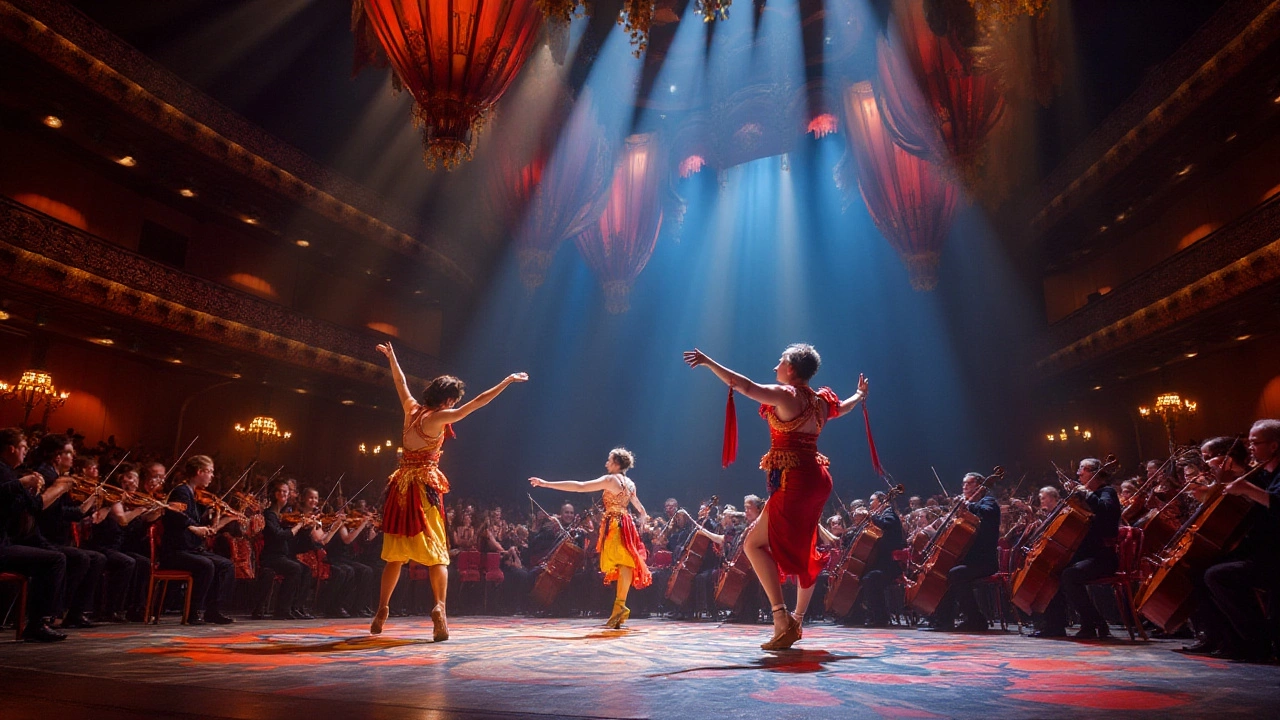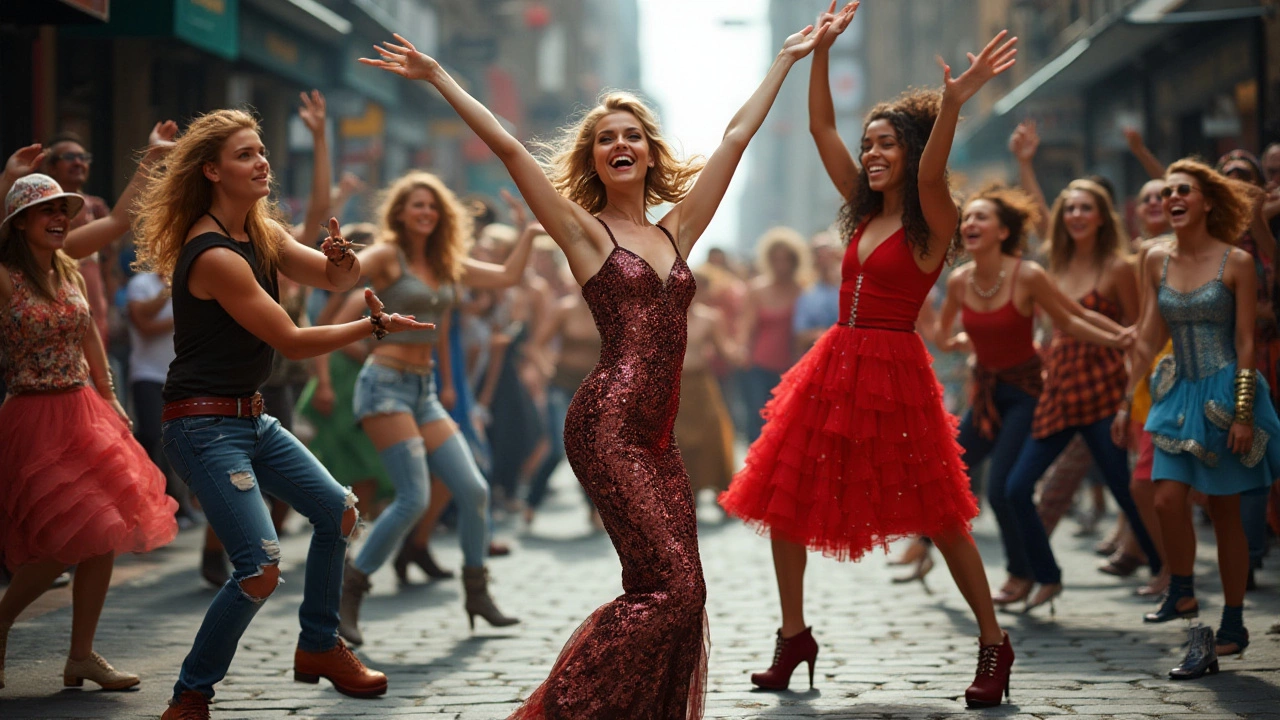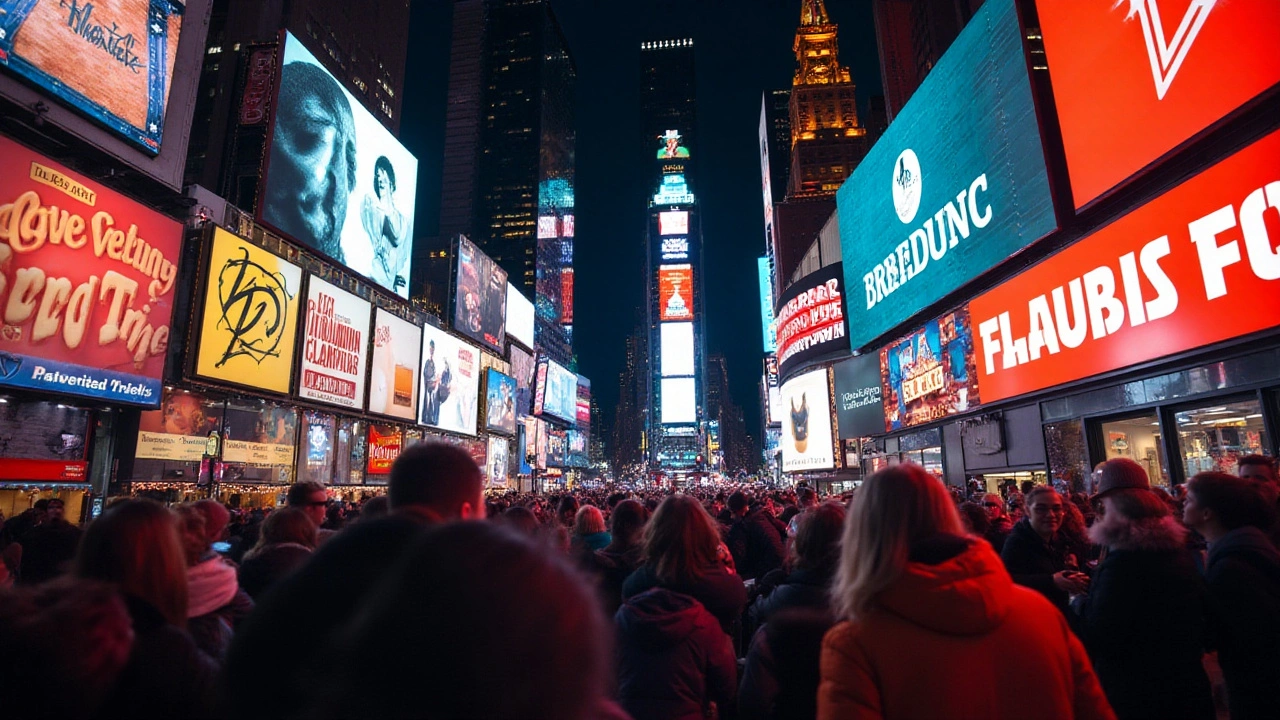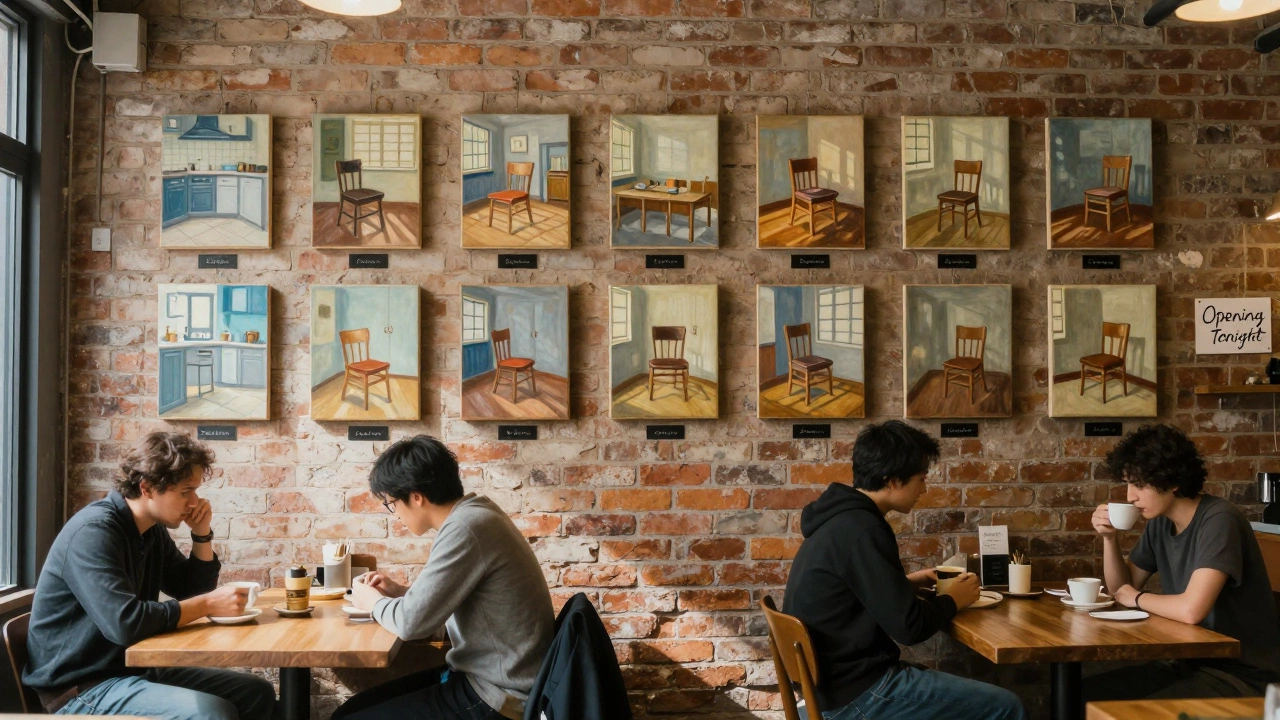Broadway's history is rich with spectacular productions that have captured audiences' hearts across generations. Each musical brings its own flavor to the vibrant tapestry that is the Broadway legacy. Whether you're a seasoned theater-goer or a newcomer to the lights of New York's theater district, one can't help but wonder: what is the #1 Broadway show of all time?
In this exploration, we'll look at what truly makes a musical stand out. From mesmerizing melodies and intricate choreography to stories that resonate deeply, the factors contributing to the success of a Broadway show are as diverse as the shows themselves. Discover with us the unparalleled charm of Broadway's finest musical creation, and why it continues to enchant audiences worldwide.
- The Magic of Broadway Musicals
- Criteria for the Greatest Musical
- A History of Broadway’s Iconic Shows
- Insights into the #1 Broadway Musical
The Magic of Broadway Musicals
Walking into a Broadway theater is like stepping into a realm where dreams are crafted into reality. The allure of Broadway shows goes beyond the glitz and glamor; it lies in the power of storytelling brought to life through song, dance, and captivating performances. From the moment you settle into your seat, the anticipation begins to build. The dimming of the lights signifies the start of a journey that has the power to transport you to another world. In this unique blend of the visual and the auditory, the minutiae of everyday life melt away, leaving room only for wonder and awe.
What makes Broadway musicals so enchanting is the perfection of each element—intricate sets that transform spaces, costumes that reflect the era and character essence, and lights that add depth and emotion to every scene. It's not just about the spectacle; it's about the effort and creativity from countless individuals who seamlessly weave the production together. Each musical number is a story in itself, transporting the audience to different emotions, whether it's the exuberance of a hopeful chorus or the introspective solitude of a solo ballad. The fusion of these elements creates an immersive experience that lingers in the minds of theatergoers long after the curtain falls.
At the heart of this magic is the raw and unparalleled talent of Broadway's performers. Their voices echo with an intensity that transcends the confines of the theater, and their acting prowess compels audiences to laugh, cry, and reflect. These artists dedicate themselves to honing their craft, supported by a multi-talented crew that ensures everything runs with clockwork precision. As the performers bring characters to life on stage, it's the stories of resilience, love, and triumphs that resonate universally, often leaving an indelible impact. As Stephen Sondheim once said, "Art, in itself, is an attempt to bring order out of chaos."
The impact of storylines is magnified by the power of music, an integral component that elevates a Broadway musical to greatness. Songs composed for the stage have a unique way of embedding themselves into culture and creating bonds among strangers who share a favorite tune. The timelessness of scores by greats like Rodgers and Hammerstein or Andrew Lloyd Webber creates an emotional anchor. These compositions indeed are more than background sound—they're central characters in their own right, channeling the characters’ joys, sorrows, and revelations. Interestingly, many iconic musical numbers have transcended their original purpose, finding new meaning in modern contexts.
The wonder of theater lives too in its community. Broadway is woven into the fabric of New York City and the hearts of millions. From passionate fans who queue for hours to snag a ticket, to new visitors discovering the enchantment for the first time, this cultural phenomenon continually recharges itself with every show. It's a world where diverse narratives coexist, where both classics and contemporary works find their place on esteemed stages. Broadway's magic is its ability to reflect our reality, offering both escape and connection, forever reminding us that within each performance lies the essence of human spirit and creativity.

Criteria for the Greatest Musical
When we dive into what makes a Broadway show the greatest of all time, there's quite a mix of elements that come into play. One pivotal aspect is the storyline. A powerful narrative can transform a show from mere entertainment to an unforgettable experience. The storyline needs to resonate with a diverse audience, often weaving emotions that mirror the human experience, ensuring relatability and depth. Think of musicals like 'Les Misérables,' where the intricacies of love, revolution, and redemption tug at the heartstrings of the audience. It is this emotional connection that often steals the show.
Music and lyrics follow closely behind, acting as both the heart and the soul of any great theatrical production. These compositions are often what propel the story forward. Andrew Lloyd Webber’s 'The Phantom of the Opera' deploys soaring melodies that not only intrigue but also leave the audience humming its tune long after the final curtain call. The songs should amplify emotion, seamlessly fitting into the narrative, while standing strong as individual pieces of art that echo through time.
The critiques and audience reception also serve as an undeniable testament to a musical’s greatness. As the New York Times once noted, “A show’s finest hour might just be how it resonates across eras” – an assertion that showcases the enduring impact of a true Broadway classic.Another key component is the production and execution. This includes everything from the set design and costumes to the choreography. Each element must be finely tuned to create a harmonious blend that enhances, rather than overshadows the storyline. Shows like 'Hamilton' broke traditional molds with its innovative set design and modern choreography while maintaining the heart of classic Broadway. These elements contribute to the holistic experience that draws audiences back time and again.
The talent on stage brings the vision to life. A cast that embodies its characters brings authenticity, leaving audiences breathless. Performers like Patti LuPone and Lin-Manuel Miranda have set benchmarks for performance quality on Broadway. Their ability to transform into their roles, connecting with the audience on such a palpable level, distinguishes a good show from a truly great one. It's in these performances that the magic truly unfolds, allowing audiences to leap willingly into a world of imagination and emotion.
A testament to a show’s greatness is its legacy. The ability to stand the test of time, to remain culturally significant even as decades pass, is no small feat. When a musical continues to break records years after its initial release, like 'The Lion King,' audience intrigue and sustained attendance speak volumes. Theaters brimming with both new and repeat attendees underscore its status not just as a classic, but as a staple.
To distill the complex tapestry of what constitutes the greatest musical into a definitive science is an impossible endeavor. However, the threads that weave together into timeless masterpieces are woven with a balance of narrative power, musical brilliance, striking production, distinguished performances, and lasting impact. Although each show tells a different story, these threads remain constant in crafting the epitome of the greatest Broadway show of all time.
A History of Broadway’s Iconic Shows
Broadway, the heart of American theater, has seen the birth of countless musicals, each leaving its own unique imprint on the world of entertainment. It all began in the late 1800s and early 1900s, when vaudeville and operettas were the musicals of choice for New Yorkers seeking an evening of vibrant performances. Then, in 1927, Broadway saw its first true musical, "Show Boat," a production that weaved together songs, narratives, and themes in unprecedented ways. This marked a pivotal shift in Broadway's journey, setting the stage for ambitious and emotionally rich storytelling that continues to this day.
The 1940s brought forth a new era defined by iconic composers and lyricists like Richard Rodgers and Oscar Hammerstein II. Their collaboration gave rise to "Oklahoma!," which was an instant hit and helped redefine the musical theater landscape. The show introduced the use of dance and music as integral parts of the story, establishing a standard for future productions. As time progressed, Broadway became home to timeless shows such as "West Side Story," "The Sound of Music," and the beloved "My Fair Lady," each of which introduced unforgettable tunes that would echo through theater halls worldwide.
With the arrival of the 1970s and 1980s, the face of Broadway changed again. Productions like "A Chorus Line" and "Les Misérables" brought spectacle and scale to the forefront, demonstrating the grandeur that Broadway could achieve. These decades also saw the emergence of Andrew Lloyd Webber's visionary works like "The Phantom of the Opera" and "Cats," which captivated audiences with their majestic scores and fascinating narratives. These productions demonstrated the immense artistic potential of the Broadway stage, attracting theatergoers from all walks of life.
The more recent years heralded a renaissance of innovative storytelling and diverse representation on the Broadway stage. Lin-Manuel Miranda's "Hamilton," a hip-hop-influenced musical about one of America's founding fathers, redefined what a Broadway show could be and who could tell those stories. With its ingenious mix of different musical genres and a diverse cast, it became a cultural phenomenon, reaching audiences far beyond the typical theater visitor.
James Corden described it as a 'game changer for musical theater,' highlighting its unprecedented impact on Broadway.
From its origins with pioneering productions that pushed the artistic envelope to the contemporary hits that have diversified its cultural narrative, Broadway’s storied past reflects a tapestry of creativity and innovation. It remains a breathtaking showcase of music, dance, and drama, tightly knitted together with threads that connect eras of theatrical wonder. Broadway's passage through time not only represents the evolution of theater arts but also mirrors the societal changes that accompany it, making it an enduring and perennial part of New York's fascinating cultural landscape.

Insights into the #1 Broadway Musical
When it comes to declaring the greatest Broadway musical of all time, the focus often turns to shows that have left an indelible mark on audiences and the theater industry alike. Imagine a musical that not only moved the curtains behind the footlights but also rippled through culture and time. Such a show is likely to have defined an era in theater, with a compelling story, powerful performances, and music that lingers long after the final bow. One title that frequently emerges in any such discussion is the legendary "Hamilton: An American Musical." Created by the visionary Lin-Manuel Miranda, "Hamilton" masterfully intertwines the story of America's Founding Fathers with contemporary hip-hop rhythms and storytelling.
This groundbreaking musical took Broadway by storm in 2015 and quickly gained a reputation not just for its innovative musical style but also for reshaping the way history is presented on stage. "Hamilton" challenged and expanded the traditional boundaries of musicals, showcasing a diverse cast that represented the melting pot that is America. Its narrative is not merely a biographical recounting of Alexander Hamilton's life; it is a reflection on complex themes of ambition, legacy, and identity. The richness of its lyrics and the originality of its compositions have set a new standard in theater, appealing both as a historical text and as a living, musical art form.
Beyond its artistic achievements, "Hamilton" has accomplished remarkable commercial success. As theaters across Broadway welcomed standing ovations night after night, tickets soared in demand, resulting in sold-out performances for months on end. The unprecedented box-office earnings established "Hamilton" not just as a formidable theatrical work but also as an economic powerhouse. Its contributions to the theater community were further recognized when it walked away with 11 Tony Awards, including Best Musical, in 2016. No less an authority than President Barack Obama declared, at a White House event in 2016, that "Hamilton" is "the best piece of art in any form that I have ever seen in my life."
The transformative impact of "Hamilton" can be measured not just in moments on stage, but through its broader cultural influence. It has spurred initiatives in education, engaging students and audiences with history in ways that textbooks could only dream of. "The Hamilton Education Program" was designed to introduce and intertwine history with creativity in high school curricula across America. This initiative, fondly known as "EduHam," emphasized using the arts to foster a deeper connection with history, inspiring students to find relevance within the past. Quotes from fans and critics often reflect this cultural shift; as one theater critic noted, "'Hamilton' is proof that art has the power to change perceptions and spark dialogue long after the curtain falls."
In terms of musical innovation, "Hamilton" has set a precedent rare in Broadway history by merging various genres into one cohesive performance. A single act could shift seamlessly from hip-hop to traditional show tunes, then incorporate jazz, R&B, and pop. These elements combined with the use of an almost entirely sung-through format and unparalleled stagecraft, helped "Hamilton" resonate with both young audiences familiar with modern music and traditional theatergoers. Its songs—each a meticulously crafted journey—have made their way into mainstream popular culture, with tracks like "The Room Where It Happens" and "My Shot" becoming anthems for both personal ambition and social change.
Finally, the conversation about entertainment on Broadway inevitably returns to "Hamilton's" ability to transcend beyond theater walls, turning into a cultural cornerstone. From Grammy-winning albums and special recordings to global tours reaching fans across continents, "Hamilton" is more than just a musical; it is a celebration of what Broadway can achieve when creativity and vision join forces. The continued demand for tickets, even years after its debut, underscores that "Hamilton" held on to its charm and appeal, proving its legacy isn't just on the pages of history but also in the hearts of millions.





